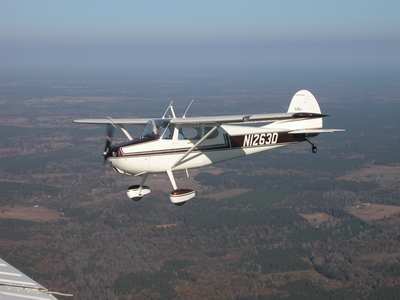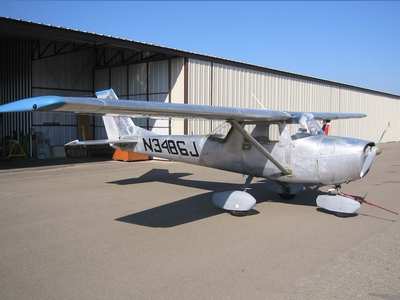Wed, May 23, 2012
Latest Effort Aimed At 100-Series Singles Produced Between 1946 And 1986
Cessna is building on a proactive safety initiative started in 2011 designed to educate single engine owner/operators on new inspection procedures. The latest effort is aimed at 100 series single-engine piston aircraft owners around the world, and informs them about new supplemental aircraft inspection procedures that will be added to 100 series Cessna service manuals. The supplemental inspections cover Cessna single-engine piston aircraft produced between 1946 and 1986.

"We've set up 40-hour training classes in Wichita for mechanics to be trained on the non-destructive inspection techniques, such as ultrasound and eddy current. These techniques will then be used to inspect high-time Cessna single engine airplanes. The intent is to not only teach them what they are looking for, but also how to identify issues that can occur more frequently with older, high-time airframes," said Tom Ronnau, Cessna's manager of Technical Service Propeller Products. "Owners are encouraged to make contact with their local Cessna service affiliate in order to schedule time to complete these mandatory inspections. The key with these inspections is to identify any serious corrosion or fatigue damage present, and if there is, get the airplane out of service and repaired."
The criteria for initial visual inspections will vary by model and aircraft age or hours of operation and will focus primarily on signs of corrosion or structural fatigue damage. Cessna authorized service providers will have special training and access to specific equipment for the inspections and for repairs, if required.
"Corrosion and fatigue are inevitable on any make and model of airframe with a high amount of hours. However, with early detection and proper maintenance, severity and effects can be minimized," said Beth Gamble, Cessna's principal airframe structure engineer. "The 100-series inspection requirements are very simple, and begin with a visual inspection that can be done quickly by a trained inspector during an annual inspection."
The inspection procedures are available at no cost on the customer access portion of the Customer Service page of Cessna.com. An interactive presentation is available on the customer access portion of the Customer Service page of Cessna.com and a short video explaining the inspection process is on Cessna's YouTube channel. (Photos from file)

More News
A Puff Of Smoke Came Out From The Top Of The Engine Cowling Followed By A Total Loss Of Engine Power On May 9, 2025, about 1020 mountain daylight time, an experimental amateur-buil>[...]
From 2022 (YouTube Edition): Jenny, I’ve Got Your Number... Among the magnificent antique aircraft on display at EAA’s AirVenture 2022 was a 1918 Curtiss Jenny painstak>[...]
Very High Frequency (VHF) The frequency band between 30 and 300 MHz. Portions of this band, 108 to 118 MHz, are used for certain NAVAIDs; 118 to 136 MHz are used for civil air/grou>[...]
“From approximately November 2021 through January 2022, Britton-Harr, acting on behalf of AeroVanti, entered into lease-purchase agreements for five Piaggio-manufactured airc>[...]
Microburst A small downburst with outbursts of damaging winds extending 2.5 miles or less. In spite of its small horizontal scale, an intense microburst could induce wind speeds as>[...]
 NTSB Prelim: Lee Aviation LLC JA30 SuperStol
NTSB Prelim: Lee Aviation LLC JA30 SuperStol Classic Aero-TV: Curtiss Jenny Build Wows AirVenture Crowds
Classic Aero-TV: Curtiss Jenny Build Wows AirVenture Crowds ANN's Daily Aero-Term (05.30.25): Very High Frequency (VHF)
ANN's Daily Aero-Term (05.30.25): Very High Frequency (VHF) Aero-News: Quote of the Day (05.30.25)
Aero-News: Quote of the Day (05.30.25) ANN's Daily Aero-Term (05.31.25): Microburst
ANN's Daily Aero-Term (05.31.25): Microburst




